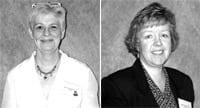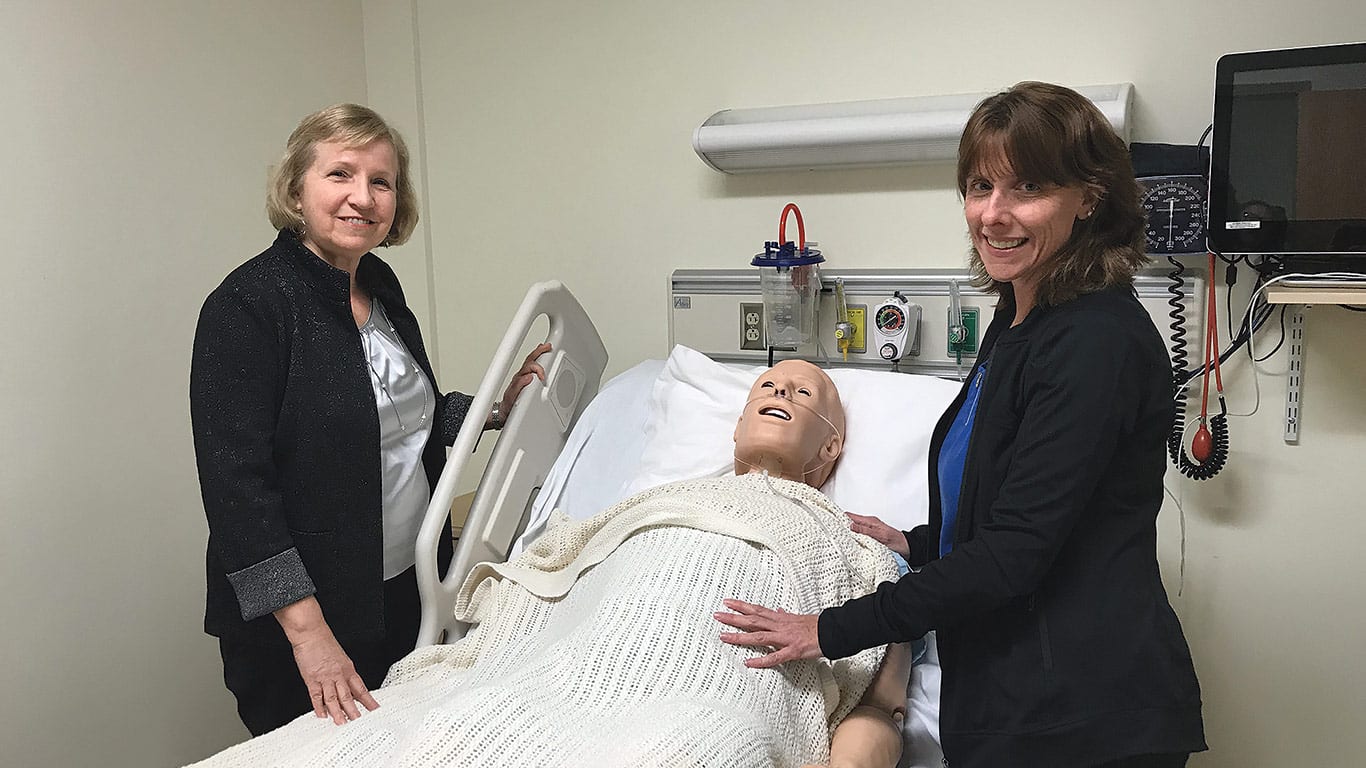Dogged Enthusiasm Round-the-clock Emergency Care at the VESH Turns Five Years Old
If you are a pet owner in Western New England, Brenda Salyer and her colleagues at the Veterinary Emergency & Specialty Hospital (VESH) are the nicest people you hope you never have to meet.
Salyer, CEO of the hospital, laughed when she said that she has heard this common refrain from people. But the truth of the matter is, when a pet owner requires emergency or specialized care, she and the professional staff at the hospital on Route 5 in South Deerfield are exactly the people they need.
It was just over five years ago that Salyer and her two partners, Drs. Erika Mueller and Kirsten Losert, were looking to create an emergency-services animal hospital. Initially, it was just the two veterinarians, and Salyer was brought on board to help out with the business plan. But with her valuable professional experience in communications and IT, she said that it was “a series of coincidences which brought me to co-ownership.
“I knew Kirsten already,” she continued, “and when I met with her and Dr. Mueller, it just turned out as the project progressed that they really wanted a third partner, and that my skill sets would be needed to actually help with the ongoing management of the business.” And with those three, a hospital partnership was born.
For a few years, she said, area veterinarians had been in contact with Mueller about the need for a referral hospital, one that would augment their services and be available for round-the-clock situations. Many vets maintain standard morning-through-evening office hours, and one or two emergency late-night calls are anything but the cat’s meow.
“Plus, there has been a sea change in people’s response to caring for their pets,” Salyer explained. “In the past 15 years, people are paying more attention to their pets’ health. People are spending more, and they are taking them to the vet more often.” This has increased the load on regular ‘wellness vets,’ a term she used to distinguish them from the specialty doctors at the VESH.
Much of the equipment for specialty medical care is expensive, and often might not be cost-effective for a wellness vet to keep on hand. But it is here that the VESH excels in its role as a referral hospital. On a tour of the compact but well-thought-out interior of the facility, Salyer pointed out rooms for digital X-rays, an in-house lab, facilities for uvltrasound and endoscopy, state-of-the-art ophthalmology and surgical suites, and a sweet-natured boxer who was getting ready for chemotherapy.
Dr. Claire Weigand was readying the dog for treatment that day, and Salyer told how the VESH is professionally designed to work hand-in-hand — or paw, as the case may be — with the many area wellness vets.
“Your vet will have a patient, and they’ll do the blood work and basic things, maybe even an ultrasound,” Salyer said. “But then if they find something more serious, they’ll refer to us. Dr. Wiegand, for instance, can do chemotherapy, or it may require surgery that Dr. John Benson can do. The specialty side of things really is here to augment your regular vet.”
Before the hospital ever broke ground five years ago, the three partners invited wellness vets to a Q & A session at the Hotel Northampton. Salyer said that it was important to have a dialogue, and a rapport, with those doctors who would be their referral colleagues, on issues such as communication (the VESH faxes the animals’ general practitioner upon arrival), which services they would want a specialty hospital to offer (it started out with only critical care — but more on that later), and, most importantly, non-competition with their own practices.
“I remember one vet standing up and asking, ‘do you promise not to do wellness?’” Salyer remembered. “Of course the answer was and will always be ‘yes.’ There are so many great veterinarians in the area. What the area doesn’t need is for us to compete with them — we need them to need us. That is our wheelhouse, our focus, and always will be.”
It was important for the three partners to establish this business model, and to let the area’s doctors know who it was that was setting up shop.
“We are regular people, not some faceless corporation out in California,” Salyer explained. “I want those vets to know that they can always call me personally and ask me a question. And people do — they know I will listen to what they have to say, and have a conversation.”
Creatures Great and Small
With a dedicated commitment to both animals and the people who love and care for them comes an equal passion for the professionals at the hospital. With a professional background at a variety of different companies, Salyer encountered a learning curve when it was her turn to be in charge.
“The reason I got involved here, my own personal goal, because I didn’t come from the veterinary industry, was to build a business that offered great customer service — one of our priorities here — but also one that offered a great workplace for employees,” she said.
“When you work at as many places as I have, you get a sense of how you want things to run,” she continued. “When it comes your turn to try it, it becomes an interesting experience to see what kind of a workplace you can help build, and still have a successful business, because benefits are expensive.
“But I think we are getting the balance right,” she went on. “For instance, our 401(k) is a profit-share, and we have a philosophy about that. We are successful because of our employees, so how can we give back to them? That’s really an important personal reason for getting involved—to create meaningful, well-paying jobs for people. And here we are now with 40 employees, up from 15 at the start, and we still are hiring.”
Looking back at the earliest roster, there was only Losert and Mueller to manage emergency and critical care. Salyer explained that, at the beginning, the three made a decision to start out small and slowly grow in size.
“Looking back, we knew it wasn’t a large-enough facility,” she explained, adding, “But we didn’t want to go into this with a lot of debt. So initially we opened with four exam rooms, and we didn’t have any specialists at the outset. We are all about slow and smart growth.
“However, we always had a plan to add specialists as the area demonstrated a need to sustain them,” she continued. “Early on, right away, we knew a board-certified surgeon was necessary, as well as a cardiologist and ophthalmologist. Internal medicine started sustaining itself right away.”
And as the demand for services — and a market for those offerings — increases, so too will the hospital’s size.
“What we know now is that the area can sustain a dermatologist, so we’re looking there,” she said. “We know we can use a CT scan, or MRI, because we’ve been referring people down to Connecticut for those, and there is nothing up this way except at Tufts.”
And after five years, Salyer said, if that the VESH does have expansion on the horizon, most likely it will be in the form of additions to the existing structure. But in the long-term forecast, another building is a possibility also. A teaching hospital with the possibility for interns and on-site continuing education would be an ideal complement to the VESH, she said.
A Breed Apart
“But that’s very much down the road,” she clarified.
Until then, the VESH is still the place you hope you don’t need to bring your pet. But with a dedicated staff and a full menu of critical and specialized medicine, it is exactly what you need if the situation does arise.
“I think we have a small-town feel as a business,” Salyer said, “but with the amenities, technology, and expertise of a big city.”




Comments are closed.